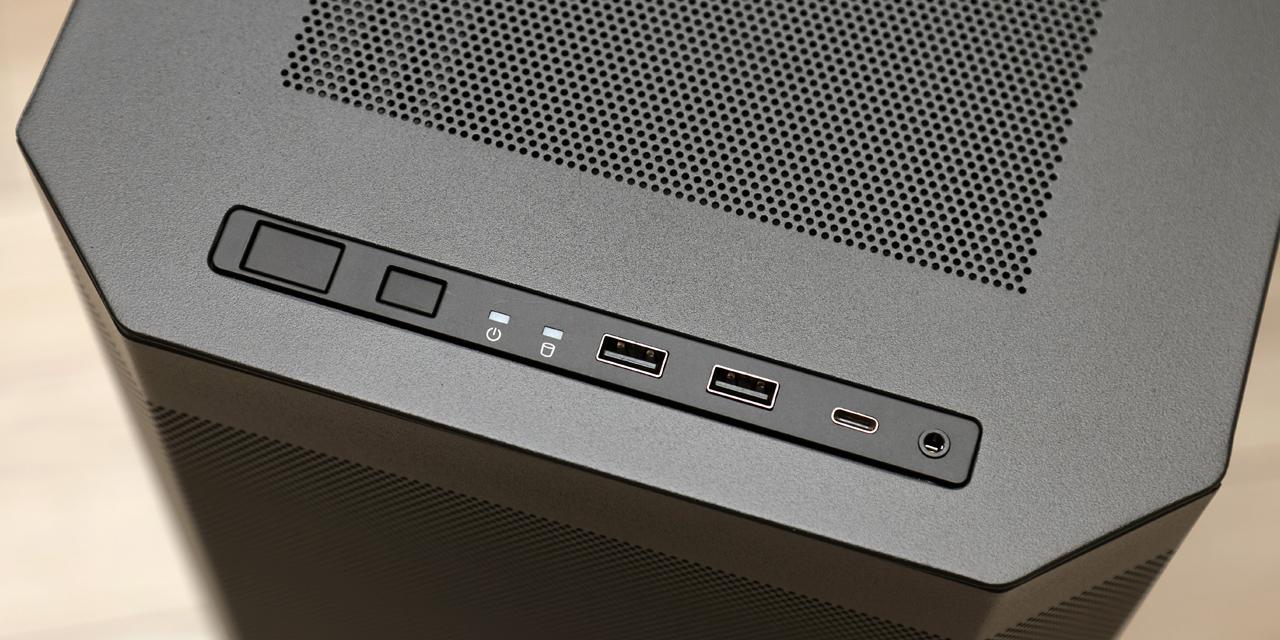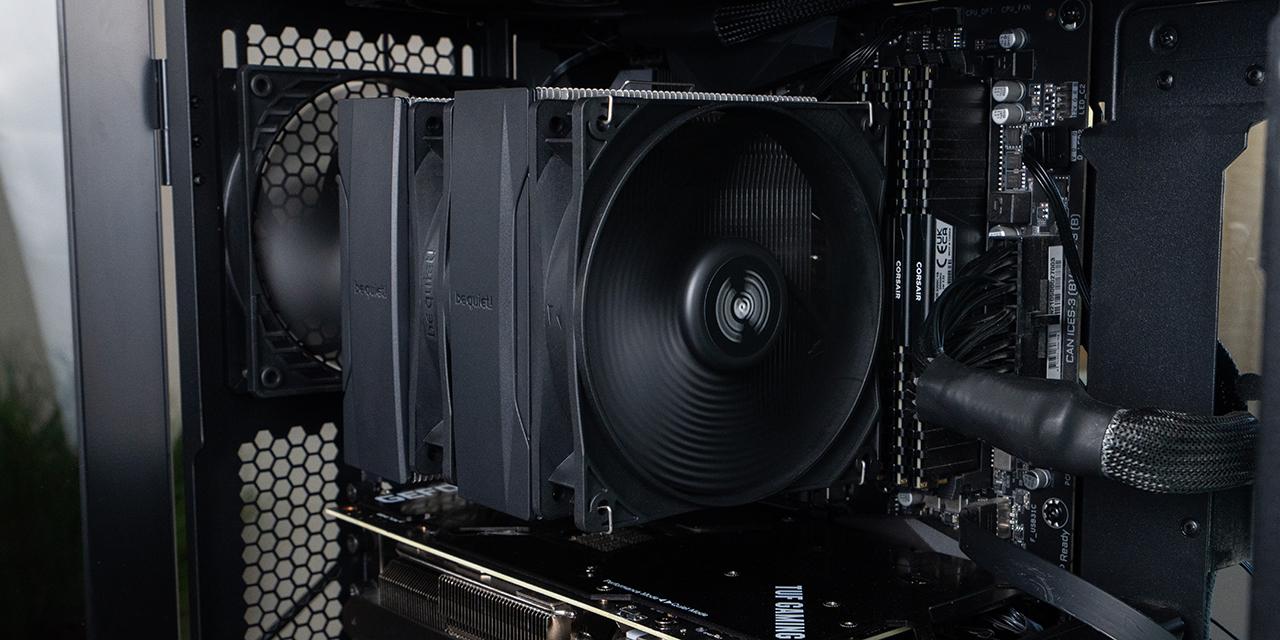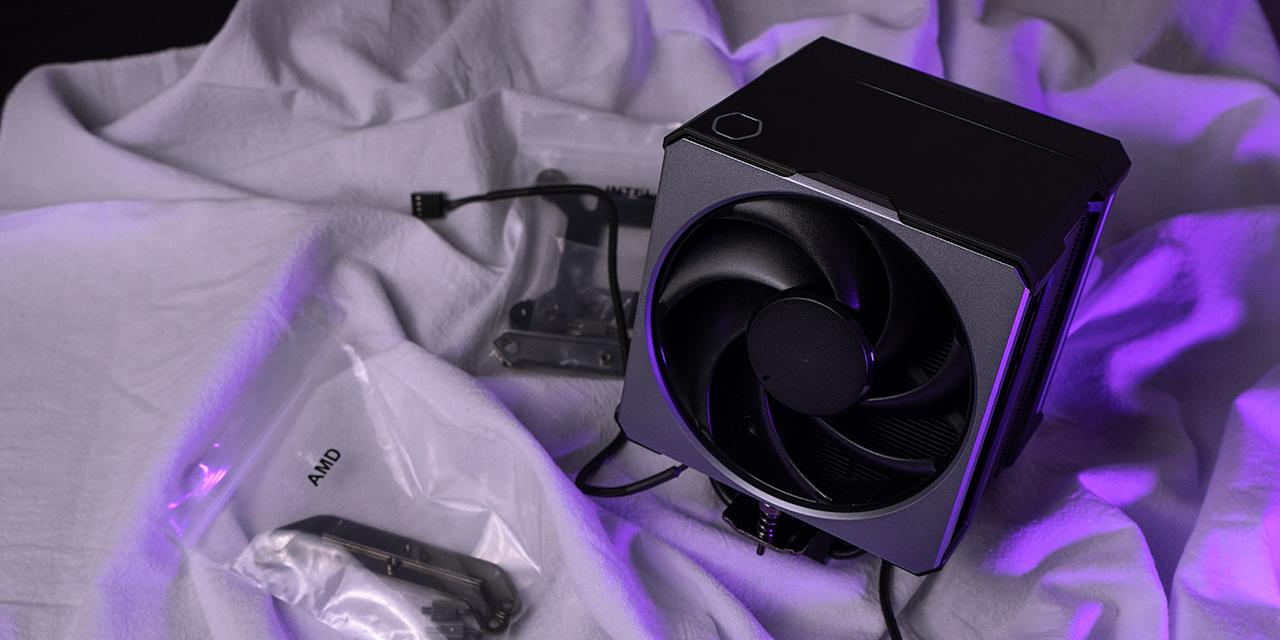Page 4 - Installation and Conclusion

As with all the installations I do, the first thing on my list is take the power supply and slot it into place. In this build, it is the Cooler Master V1000 1000W. A maximum length of 175mm is stated by Fractal Design for the power supply, though I would recommend even less, especially if you need to move the drive cage back. This allows the user to be able to route the power cables with the bottom hole. The next thing I did was routing the necessary power cables. The rubber grommets do an excellent job in only allowing cables through, while blocking the rest of the opening for a cleaner look. ATX layouts are generally more standardized across manufacturers, so the routing options provided here were quite adequate.
From the back of the case. I found the overall spacing to be quite adequate, especially in the valley. The three Fractal Design labeled Velcros were useful in gathering all the excess cables. I routed most of the cables through the lane, except for the 8-pin CPU power cable, which was routed up the back side and into the top. In addition, there is quite a bit of wiggle room here to squeeze all your cables in. The extra clearance near the front is much appreciated, and it allows cables to sit here without any issues of securing the back panel. If there is one thing I would change, it would be to add more cable tie points. While the straps are very handy, I think having some extra cable tie points would have been appreciated. Otherwise, I think Fractal Design has done an excellent job in giving ample room at the back.

Before getting all the cables in place however, I took some time to install the hard drive, the Seagate IronWolf ST10000VN0004 10TB. Once again, this massive NAS hard drive makes an appearance in my testing. I really do like the drive cage they have implemented here. The full metal design in both the cage and the sleds is great. There are also rubber mounting points to prevent any vibrations between the storage and the rest of the sled. You can mount either 3.5" or 2.5" drives here, and both mounting positions provide enough room off the front to plug in your cables. If you need more room, the triple 2.5" drive plate can also be used, which is found behind the motherboard. I do not have this many drives, but it is great to see this flexibility here.

The next step I took was installing the motherboard. I first mounted the Intel Desktop Board DZ77GA-70K in place. As this is a full sized ATX motherboard, it filled up all of the space without overlapping on the grommets. Obviously, any larger motherboard like an extended ATX one will not fit here. My next steps were to install the RAM and the processor, followed by the CPU cooler. If air coolers are your jam, the Fractal Design Meshify C has the width to fit larger heatsinks up to a height of 172mm. For your reference, heatsinks as large as the Noctua NH-D15 measure 165mm in height. On the other hand, if you are installing liquid cooling, radiator options are available up top or at the front, as mentioned previously. My next step would have been to install a graphics card, but I did not have one for this build. A maximum clearance of 315mm in length is available for the video card, which should be plenty of space. However, your mileage may vary, depending on the front cooling options you have mounted. Lastly, I connected the rest of the power, data, front I/O, and fan connections to the motherboard.

Plugging my monitor and peripherals into the back ports, I powered my system to life and the system booted up to my login screen. As you can see from the photo above, the window reveals a lot. Again, cabling this was straightforward and easy with the ample spacing in the back of the Meshify C. When it comes to sound, I think this is one place where the Fractal Design Meshify C suffers compared to the Fractal Design Define C. This is primarily due to the lack of any sound dampening material on any of the panels. According to the subjectively-objective APH Networks sound scale, where 0 is silence and 10 is loud, the Fractal Design Meshify C is a good 3.5/10 in my personal opinion. It is still pretty quiet, even under full load. Again, clear airflow, and not sound reduction, is the main point of the Meshify C, so the tradeoffs are understandable. Thankfully, none of the other parts, like fans or the window, rattle around, keeping overall noise to a minimum.
-----------------------------------------
After seeing and installing everything, I think Fractal Design has continued their careful attention to detail, while addressing the demands of market trends, to create a compelling story in the Meshify C. Despite the change in the front panel, the Meshify C is very much, unapologetically, a Fractal Design product. This includes the still very ruler-made exterior, with its straight edges and overall boxy exterior. They may have relaxed their rules with the unique front panel, but even this is full of straight edges too. On the exterior, we also have the tempered glass finish, and once again, Fractal Design has polished it smartly with the dark tint and black borders to prevent messy cabling or fingerprints from showing, respectively. Internally, this is still very much a Fractal Design layout, with a carbon copy of the Define C here. Thus, it has all the features like flexible drive spacing, radiator mounting, and rubber grommets in all the right places. Building in the Meshify C proved to be a breeze. The smaller size, while some may think would hinder, actually made working in the Fractal Design Meshify C quite easy. Obviously, those with larger parts like CPU coolers or video cards should be conscious of the smaller footprint, but most standard parts should fit. I think the only improvement I would make is to add the USB Type-C front connector we have been waiting for. In the end, a major competitor for the Meshify C might actually be found from within. The Fractal Design Meshify C goes for $90 USD and is currently the same price as the tempered glass version of the Define C. The differentiation between the two options is whether you want a less restricted airflow or a quieter build. Even so, the Meshify C is not a complete departure Fractal Design's roots, which is a really good thing in this case.

Fractal Design provided this product to APH Networks for the purpose of evaluation.

APH equal.balance Award | APH Review Focus Summary:
8/10 means Definitely a very good product with drawbacks that are not likely going to matter to the end user.
7/10 means Great product with many advantages and certain insignificant drawbacks; but should be considered before purchasing.
-- Final APH Numeric Rating is 7.8/10
Please note that the APH Numeric Rating system is based off our proprietary guidelines in the Review Focus, and should not be compared to other sites.
The Fractal Design Meshify C is an excellent computer chassis, treated with tempered glass, and focused on providing an unobstructed airflow throughout.
Do you have any comments or questions about the Fractal Design Meshify C? Drop by our Forums. Registration is free, and it only takes a minute!
Page Index
1. Introduction, Packaging, Specifications
2. Physical Look - Outside
3. Physical Look - Inside
4. Installation and Conclusion





